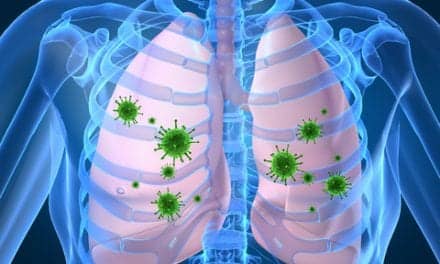 |
Home oxygen is going through some major changes. Reimbursement has driven these shifts since 1987, climaxing with competitive bidding and the ensuing delay. 1987 brought “modality neutral” payment, which tremendously affected liquid oxygen for our patients. In 1997, there was a 25% reduction in payment for O2, and another 5% reduction in 1999. 2003 saw another 12% reduction, and 2005 saw the Deficit Reduction Act, which capped payments at 36 months—and transferred title of the equipment.
Competitive bidding would have caused another 26% reduction in reimbursement for those winning the bid. As it stands, everyone will get a 9% reduction until the issue resurfaces. These changes have driven the home medical equipment industry to look for solutions, including nondelivery models that minimize the number of deliveries that are made to the home. Oxygen is a labor-intensive business, with a traditional model of delivering equipment—especially routine delivery of cylinders to a patient’s home. Along with this, unique technological developments have sparked changes in the equipment used by our patients.
Standards for Oxygen Therapy
Use of venerable standards has governed whether patients receive supplemental oxygen. Requiring either arterial blood gas testing or pulse oximetry, and using those results for prescription of oxygen, has been a longtime practice. The GOLD standards (Global Initiative for Chronic Obstructive Lung Disease) are an international effort. First, it categorized chronic obstructive pulmonary disease (COPD) according to severity of illness. The emphasis of the GOLD standards was to help primary care physicians manage COPD patients, and provide early diagnosis through spirometry. Thomas Petty, MD, has studied long-term oxygen therapy (LTOT) for many years, asking the primary question: Does LTOT improve survival rates? After the Nocturnal Oxygen Therapy Trial (NOTT), initial results showed the answer was “yes.” More research followed, showing continuous oxygen therapy (COT) had even better survival rates than nocturnal use.
Exercise was also included, and groups were divided into high walk (greater than 3,950 feet walking per day) and low walk (less than that distance). Patients who used oxygen continuously in the high walk category had the highest survival rates. Nocturnal oxygen patients in the low walk category had the lowest survival rates. To achieve the high walk, ambulatory oxygen systems are important for good oxygen saturation.
Remarkable Evolution
Think of how this industry has changed, starting with large H and M cylinder oxygen delivery, then liquid oxygen. Both were labor intensive, but early on the reimbursement was not restrictive. Then came first-generation oxygen concentrators that weighed between 150 and 200 pounds. The next generation improved to make them smaller and more efficient, but that same technology is the basis of our oxygen concentrators today. With further improvements in the material that separates the oxygen from the nitrogen, along with smaller compressors and electronic components, these concentrators are now fully portable.
Home Oxygen Choices
What oxygen system is the right match for your patient’s needs? According to the reimbursement structures in place now and in the future, what will best meet your ability to service patients? Tom Williams, MBA, RRT, one of the leading consultants in oxygen therapy, has a great way of looking at this question. Williams breaks down the areas of “in the home,” “outside the home,” and “travel.” As you look at these areas, you can evaluate your patient and what best suits your durable medical equipment profile. There are also areas of commonality when a device could be used in a couple of different areas.
For example, stationary concentrators would be used in the home, and would have many limitations outside the home and for travel. However, a liquid oxygen system could be used in the home if the patient has a reservoir system, and outside the home if the patient has a portable unit.
Cylinders with conserving devices can be used outside the home. Know that conserving devices are not created equally. Bob McCoy, RRT, of Valley Inspired Products, Apple Valley, Minn, has done good research into the differences in oxygen-conserving devices (OCDs).
There is an absolute balance between best conservation and good oxygen saturation. If you are maximizing one, you are compromising the other. Don’t believe a savings ratio of 9:1 has the ability to maintain good saturation. Demand and constant minute volume conservers deliver less oxygen per breath as the respiratory rate increases. This has the ability to possibly cause oxygen desaturations as your patients increase activity.
Clinically, a savings ratio between 4:1 or maybe 5:1 is the maximum to also maintain proper oxygenation. Best practice is to check saturations with a pulse oximeter during normal conditions for that patient. Take the time to understand conserver technology, because it is the basis for conserving devices, portable concentrators, and oxygen filling systems that use a conserving device with them.
Oxygen filling systems that fill a cylinder from a concentrator are another choice for “outside the home” ambulatory oxygen. Don’t forget the source oxygen is the same as what the concentrator produces—so between 90% and 95% is common. Keep that in mind when titrating patients for one of these devices. Pay attention to the technology used so proper adjustments can be made.
Portable concentrators can be practically used “outside the home” and for “travel.” There are two classes of these. The first is larger and has continuous flow. There is good research, but not a huge body of information, that supports the idea that patients at night may not be able to trigger these devices—therefore increasing the chance of oxygen desaturation. Several abstracts by key RTs in the profession have found that, overall, patients can tolerate the portable concentrators—but there is not a large body of evidence to support this. Second class is the smaller concentrators, which (practically) cannot do continuous flow, but their size allows the patient to be highly mobile. It depends on the needs of your patients. One may suit where the other may not.
New on the scene are concentrators that generate liquid oxygen using a portable liquid unit for patient ambulation. These units have promise in the industry. Specifically, one unit uses an interesting algorithm to determine increased activity, and delivers an increased bolus of oxygen with more activity.
Operational Efficiency
As mentioned previously, reimbursement has driven the industry to look seriously at nondelivery models to minimize how often equipment is delivered to the patient. Systems like the oxygen filling systems and portable concentrators fit into a program to increase the efficiency of your operation. However, there must be proper clinical evaluation to find the best system that is well suited to the patient.
Many times, new technology is driven by outside forces, and oxygen delivery is no exception. There have been great developments in both stationary and ambulatory oxygen, and technology is therapeutically beneficial and cost-effective for our patients who are living longer and better lives.
David Henry, RRT, is a respiratory clinical specialist for DeVilbiss Healthcare Inc, Somerset, Pa. He can be reached via e-mail: .









